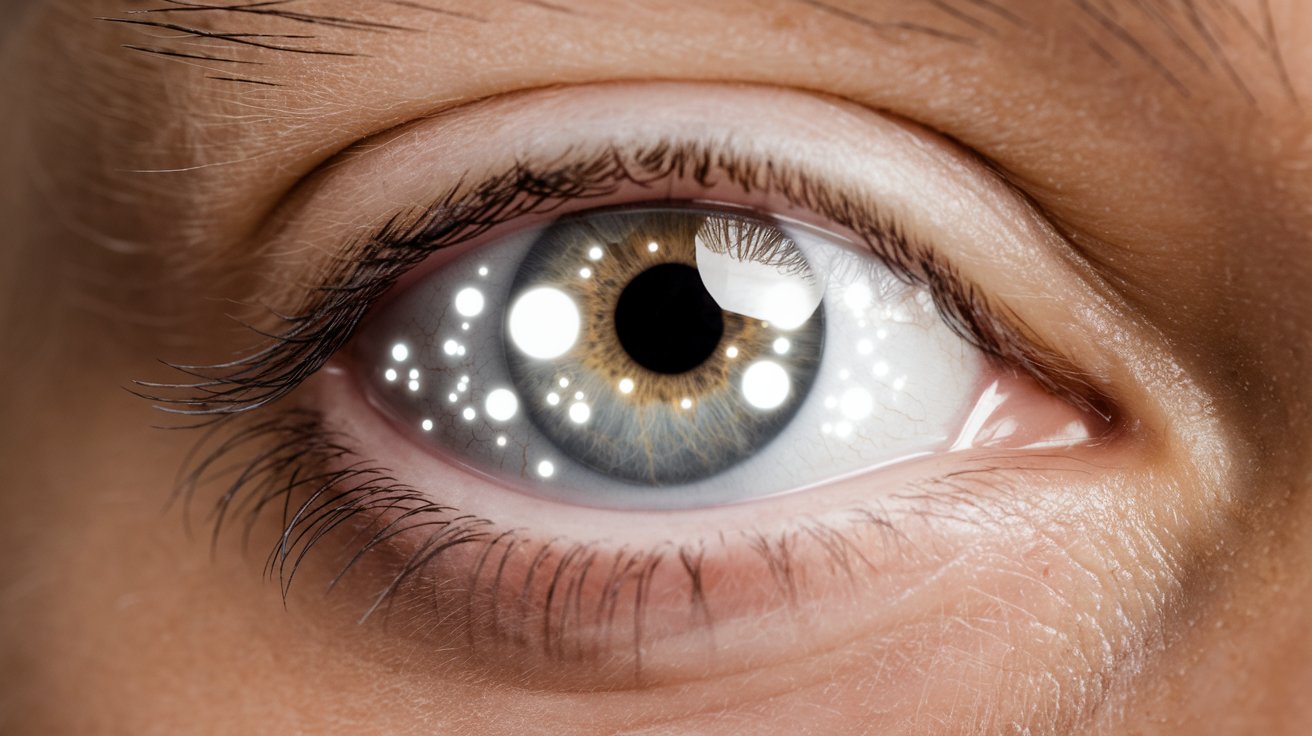
What are White Dot Syndromes? White Dot Syndromes are a group of rare inflammatory eye diseases that affect the retina and choroid. These conditions get their name from the white spots that appear on the retina during an eye exam. Why should you care? Because they can lead to vision loss if not diagnosed and treated promptly. Who gets them? Mostly young adults, but anyone can be affected. What causes them? The exact cause is unknown, but they are believed to be linked to autoimmune responses. How are they treated? Treatments often include corticosteroids and immunosuppressive drugs. Want to know more? Keep reading for 30 intriguing facts about these mysterious eye conditions.
Key Takeaways:
- White Dot Syndromes are rare eye diseases causing vision problems. They affect young to middle-aged adults, especially women. Diagnosis is challenging due to overlapping symptoms and rarity.
- Understanding the types, causes, and treatment options for White Dot Syndromes can help manage the condition effectively. Regular eye check-ups, wearing sunglasses, and staying informed are crucial for living with the condition.
What Are White Dot Syndromes?
White Dot Syndromes are a group of rare inflammatory eye diseases that affect the retina and choroid. They are characterized by the presence of white spots or lesions in the back of the eye. These syndromes can lead to vision problems and are often challenging to diagnose due to their rarity and overlapping symptoms.
- White Dot Syndromes are a collection of inflammatory eye diseases.
- They primarily affect the retina and choroid, the layers at the back of the eye.
- Common symptoms include blurred vision, floaters, and light sensitivity.
- These syndromes are more prevalent in young to middle-aged adults.
- Women are more frequently affected than men.
Types of White Dot Syndromes
There are several types of White Dot Syndromes, each with unique characteristics and symptoms. Understanding these types can help in identifying and managing the condition more effectively.
- Acute Posterior Multifocal Placoid Pigment Epitheliopathy (APMPPE) is one type, often presenting with sudden vision loss.
- Birdshot Chorioretinopathy is another type, characterized by multiple, small, cream-colored spots.
- Multiple Evanescent White Dot Syndrome (MEWDS) typically affects one eye and is often preceded by flu-like symptoms.
- Serpiginous Choroiditis presents with serpentine lesions that can recur over time.
- Punctate Inner Choroidopathy (PIC) involves small, yellow-white spots and can lead to scarring.
Causes and Risk Factors
The exact causes of White Dot Syndromes remain unknown, but several factors may contribute to their development. These factors can include genetic predisposition, immune system abnormalities, and environmental triggers.
- Genetic factors may play a role in the development of these syndromes.
- Autoimmune responses are often implicated, where the body's immune system attacks its own tissues.
- Viral infections have been suggested as potential triggers.
- Stress and hormonal changes might exacerbate symptoms.
- Certain medications have been linked to the onset of these syndromes.
Diagnosis and Testing
Diagnosing White Dot Syndromes can be complex due to their rarity and the similarity of symptoms to other eye conditions. Several tests and imaging techniques are used to confirm a diagnosis.
- A comprehensive eye exam is the first step in diagnosing these syndromes.
- Fluorescein angiography helps visualize blood flow in the retina and choroid.
- Optical coherence tomography (OCT) provides detailed images of the retina's layers.
- Indocyanine green angiography (ICGA) is used to detect choroidal abnormalities.
- Blood tests may be conducted to rule out other systemic conditions.
Treatment Options
Treatment for White Dot Syndromes varies depending on the type and severity of the condition. The goal is to reduce inflammation, manage symptoms, and prevent vision loss.
- Corticosteroids are commonly prescribed to reduce inflammation.
- Immunosuppressive drugs may be used in severe cases.
- Anti-VEGF injections can help manage complications like choroidal neovascularization.
- Laser therapy might be employed to treat specific lesions.
- Regular monitoring and follow-up are essential to manage the condition effectively.
Living with White Dot Syndromes
Living with White Dot Syndromes can be challenging, but with proper management and support, individuals can maintain a good quality of life. Awareness and education about the condition are crucial.
- Regular eye check-ups are vital to monitor disease progression.
- Wearing sunglasses can help reduce light sensitivity.
- Maintaining a healthy lifestyle, including a balanced diet and regular exercise, can support overall eye health.
- Joining support groups can provide emotional and practical support.
- Staying informed about the latest research and treatments can empower patients to make informed decisions about their care.
Final Thoughts on White Dot Syndromes
White Dot Syndromes are a group of rare eye conditions that can affect vision. They include diseases like Birdshot Chorioretinopathy, Multiple Evanescent White Dot Syndrome (MEWDS), and Acute Posterior Multifocal Placoid Pigment Epitheliopathy (APMPPE). These conditions often present with symptoms such as blurred vision, floaters, and light sensitivity. Diagnosis usually involves a combination of clinical examination, imaging techniques like fluorescein angiography, and sometimes blood tests.
Treatment varies depending on the specific syndrome but often includes corticosteroids or immunosuppressive drugs. Early diagnosis and treatment are crucial for preserving vision. If you experience any unusual changes in your vision, consult an eye specialist promptly. Staying informed about these conditions can help you manage symptoms better and seek timely medical advice. Remember, your eyes are precious, so take good care of them.
Frequently Asked Questions
Was this page helpful?
Our commitment to delivering trustworthy and engaging content is at the heart of what we do. Each fact on our site is contributed by real users like you, bringing a wealth of diverse insights and information. To ensure the highest standards of accuracy and reliability, our dedicated editors meticulously review each submission. This process guarantees that the facts we share are not only fascinating but also credible. Trust in our commitment to quality and authenticity as you explore and learn with us.
